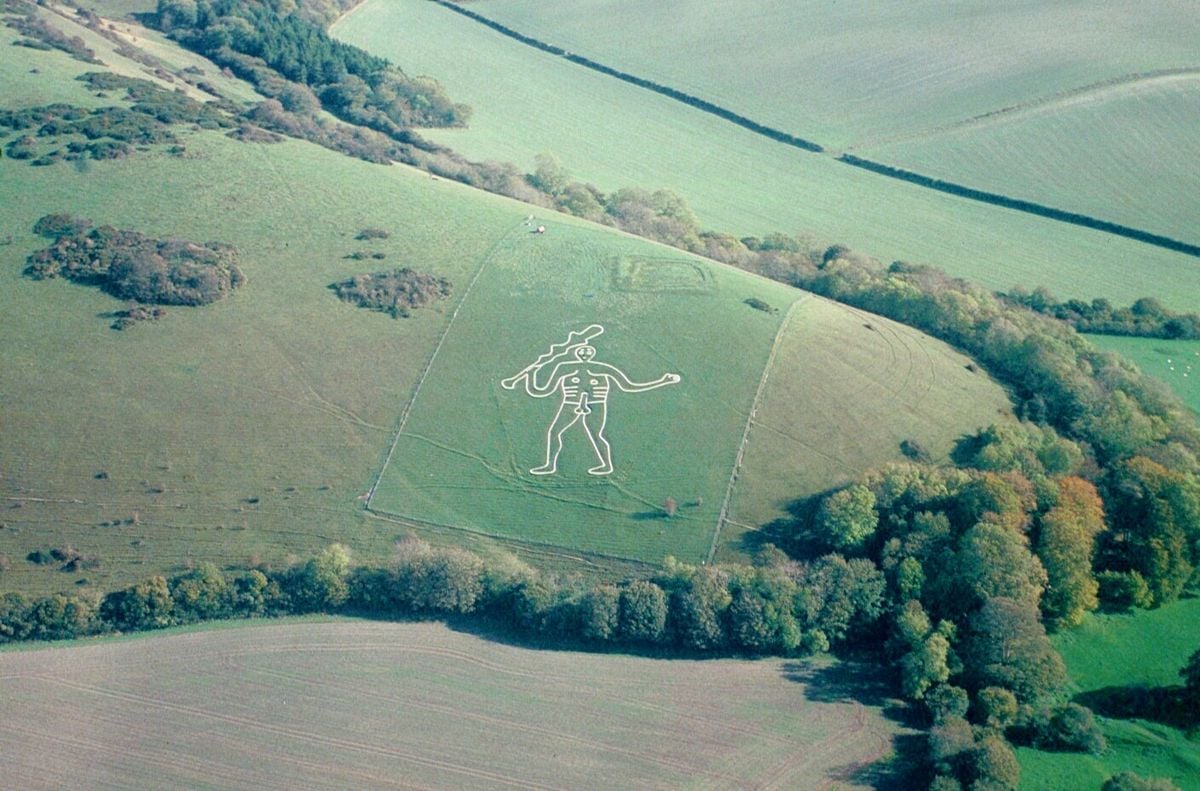
A massive figure in Dorset, England, of a naked man wielding a club, known as the Cerne Abbas Giant, is not prehistoric, as was previously believed, according to tests of snail shells found on the site.
Instead, the 180-foot-tall work likely dates to medieval era.
The testing was conducted by the National Trust, which has owned the historic site since it was donated to the UK in 1920.
Martin Papworth, a National Trust senior archaeologist, conducted excavations on the site in March and obtained core samples from the giant’s elbows and feet.
The hill figure Cerne Abbas in Dorset, England, may only be a few hundred years old. Photo courtesy of the National Trust.
Initial examinations uncovered evidence of two microscopic snail species not known to exist in the UK before the 13th and 14th centuries. One of the snails found is the Cernuella virgata, or vineyard snail.
“They arrived here accidentally, probably in straw and hay used as packing for goods from the continent,” environmental archaeologist Mike Allen told the BBC. “Sadly, this shows the giant is unlikely to be prehistoric or Roman, and more likely dates to medieval times or later.”
Environmental archaeologist Mike Allen taking samples of the hill figure Cerne Abbas in Dorset, England. Photo courtesy of the National Trust.
Historians have speculated that the man represents a Celtic god; the Anglo-Saxon deity Helis; or the Greek and Roman demigod Hercules. Another theory suggests that the work was created around the time of the English Civil War (1642–51) to mock Oliver Cromwell. The earliest recorded mention of the figure comes from 1694.
Local lore holds that the 180-foot hill figure was linked to Pagan fertility rites.
The snail shell testing also indicates that the giant, which was dug in shallow trenches and filled with chalk rubble, at one time fell into disrepair and became overgrown.
Today, new chalk is added roughly every 25 years to maintain the artwork. (The artwork was also recently unofficially altered to give it a mask, updating the giant for the age of social distancing.)
The hill figure Cerne Abbas in Dorset, England, outfitted with a face mask. Photo by Kevin Knight.
The National Trust will conduct additional testing on the samples in the fall using optical stimulated luminescence dating, a technique used to date fossils and minerals in geological sediments. Plans to survey the site using a drone were abandoned due to lockdown, according to the Cerne Historical Society Magazine.
“It is likely that the tests will give us a date range, rather than a specific age, but we hope they will help us better understand, and care for, this famous landmark,” Papworth told the BBC in March.
In the 1990s, archaeologists used the same kind of test, which uses ionized radiation to determine when minerals were last exposed to sunlight, to determine that a similar work of chalk land art, the Uffington White Horse in Oxfordshire, England, was 3,000 years old, making it the nation’s oldest hill figure.